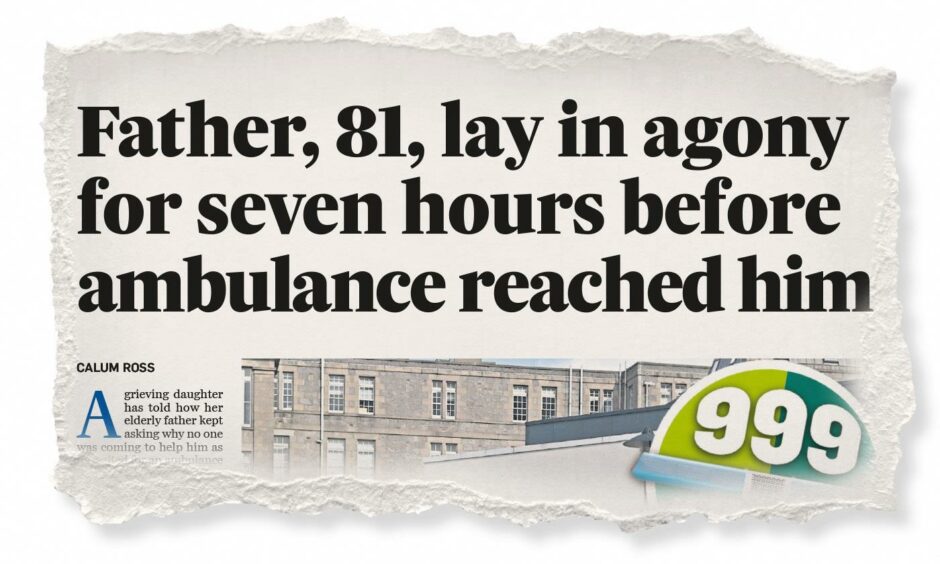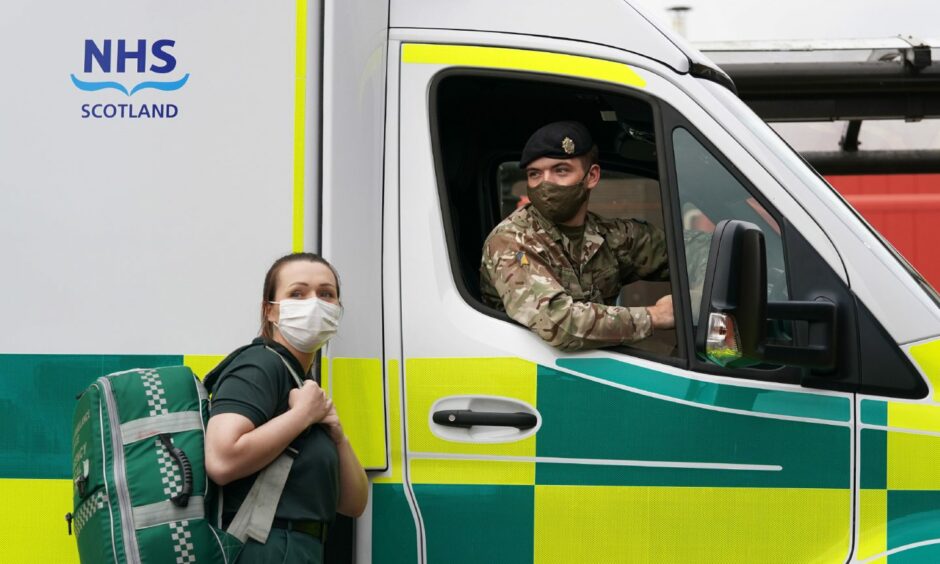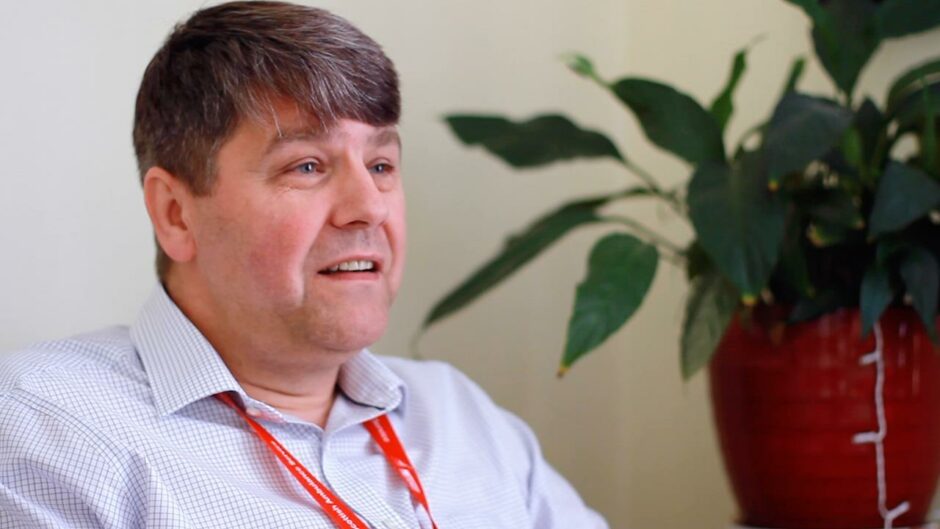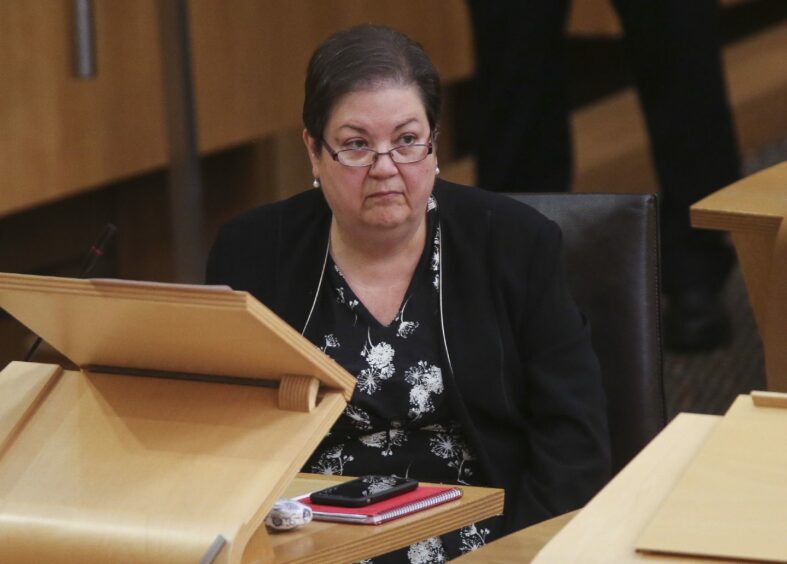Scotland’s crisis-hit ambulance service is just a “small sprinkling of snow” away from grinding to a complete halt, union leaders have warned.
Jamie McNamee, Unite convenor at the Scottish Ambulance Service with 35 years of experience, said the beleaguered service is in a “massively worse” state than previous winters and warned the coming months are looking “bleak”.
Meanwhile David O’Connor, Unison’s Scottish regional organiser for ambulance staff, said workers are enduring “the most extreme circumstances we’ve faced in over a decade – if not longer” as they are asked to work up to 10 hours without breaks.
Health Secretary Humza Yousaf announced last month that hundreds of firefighters, military personnel, students and taxi drivers would help out as part of a package of “decisive and unconventional action to save lives”.
It came after Nicola Sturgeon sent a request for help to the Ministry of Defence to ease a backlog that saw a man die at home after waiting 40 hours for paramedics.
Five hour waits at A&E
However, plans for Army drivers to take on emergency calls had to be scrapped after it emerged they do not have the correct licences to blue-light passengers to A&E.
Crews have reported having to wait up to five hours to offboard patients to emergency departments due to a shortage of beds, out of hours services, and other specialist medical practitioners.
The first minister said the NHS is dealing with “crisis conditions as a result of a global pandemic” but Mr McNamee said Covid has been used as a “convenient hat stand” for long-term problems hanging over the health service.
He cited the examples of emergency departments centralised to Glasgow’s Queen Elizabeth University Hospital, and Aberdeen Maternity Hospital, where a woman had to wait five hours for an ambulance to drive her from nearby Aberdeen Royal Infirmary.
We could be back here next year
“What we need is an improvement in the estates of these A&E medical receiving units. We need to see the estates increased,” Mr McNamee said.
“The counter argument from the health boards will be that they can’t actually staff that, so I think there’s got to be a collaboration between them and the Scottish Ambulance Service.
“But ultimately, unless we see an increase in these departments, we’re going to be back here next year and the following year.”
Speaking about the outlook for this winter, he added: “It’s still looking bleak. I would imagine if we have a small sprinkling of snow, we won’t be far from grinding to a halt.”
Mr McNamee said Army personnel have been warmly received by ambulance staff but that their addition “hasn’t alleviated the problem at all”.
“Unfortunately, army staff coming into the service was never the ask,” he said.
“The ask was for the Scottish Government to provide populations with a greater capacity at medical receiving units to allow us to handover.
“They couldn’t achieve that so they had to look broader for any means, and the army was put forward as a last ditch effort.
“But it wasn’t providing drivers, it was providing field hospital facilities, to allow us to take the patients there until such a time as they can be handed over to medical professionals, and allow us to get back on the road and meet that rising demand.”
Horrendous conditions
In previous winters, staff have been asked to work overtime to cover shortages in ambulance rosters but union leaders are concerned that “horrendous” working conditions and few breaks have left workers too exhausted to fill the gaps.
David O’Connor, Unison’s Scottish regional organiser for ambulance staff, said it is difficult to quantify the scale of the challenge this winter because the service has never faced pressure like it before.
He pointed to an expected rise in flu cases, a return to nights out over the festive period, the continuing Covid-19 pandemic and existing winter pressures, such as staff sickness, on top of the waiting times crisis.

He said: “It’s massively daunting. This is the 12th year I’ve been working with the health service and I’ve never seen anything like it.
“I’ve never seen these kinds of situations where we’re telling staff you can’t get a break. I’ve never seen anything this challenging.”
Breaking point
Scottish Conservative health spokesman Dr Sandesh Gulhane called on the health secretary to come up with a plan to “fully resource frontline ambulance and A&E services immediately”.
“Ambulance crews are at complete breaking point and need urgent support,” Dr Gulhane said.
“The support from the UK Armed Forces is welcome, but the SNP should never have let it reach that stage where that call had to be made.
“Humza Yousaf has been too slow to act and we are now rapidly approaching winter.”
Scottish Labour’s deputy leader and health spokeswoman Jackie Baillie said ambulance services “are stretched to breaking point” and insisted the pressure “has been building for years”.
“We are in this position because the SNP ignored warnings from workers on the frontline,” she said.
“They must not make the same mistake again. Lives are on the line – the SNP must act now to get services fit for purpose before winter bites.”
A Scottish Ambulance Service spokeswoman said staff are working “incredibly hard under sustained pressure” and their wellbeing remains the service’s top priority.
The spokeswoman said lengthy patient handover times continue to be a “major issue” but military personnel are providing additional capacity to assist with service pressure, particularly around lower acuity emergency and timed admissions calls.
She added: “Recruitment and training of new ambulance staff also continues across Scotland at pace to provide additional capacity going forward.”
Biggest shock
A Scottish Government spokeswoman said the Covid-19 pandemic “has been the biggest shock the NHS has suffered in its 73-year existence and has heaped pressure on our ambulance service and wider NHS”.
“The health secretary recently set out £20 million of additional funding to help increase ambulance service capacity and improve response times and staff wellbeing,” she said.
“The ambulance service is also carrying out a national review of demand and capacity which will help to ensure they are working as efficiently as possible and have resources in place to meet both current and projected future demand.
“We are committed to supporting this work and recently announced a further £20 million in funding for the review.
“As part of this review, the service will see new ambulances introduced and almost 300 additional staff in place throughout the country. This will reduce the requirement for on-call working in some of our more rural communities.”




